#Masayuki Uemura
Text

Party Games Switch by ArtBennyRGrau on DeviantArt
#fan art#crossover#Metroid#Samus Aran#Mega Man#Roll (Mega Man)#Roll Light#Legend of Zelda#Zelda (Legend of Zelda)#Super Mario#Peach (Super Mario)#cool#cozy#pizza party#sleepover#dig it#love that painting#Masayuki Uemura#Family Computer#FamiCom
10 notes
·
View notes
Text
New behind-the-scenes footage of original Zelda features interviews with Miyamoto and Uemura
Take a rare look inside Nintendo and the original Legend of Zelda with a recent video published by the Yomiuri News Channel YouTube page. It unearths some old footage of staff working on The Legend of Zelda and Super Mario Brothers at Nintendo headquarters during the production, and features interviews with Shigeru Miyamoto and the late Masayuki Uemura.
The video was published to celebrate the…

View On WordPress
4 notes
·
View notes
Video
youtube
VS. Ice Climber/VS.アイスクライマー for Arcade made in 1984 by Nintendo, Kenji Miki, Masayuki Uemura, and Shigeru Miyamoto
1 note
·
View note
Text
40 Years Later, Nintendo's Famicom Is Still Ahead Of Its Time
New Post has been published on https://thedigitalinsider.com/40-years-later-nintendos-famicom-is-still-ahead-of-its-time/
40 Years Later, Nintendo's Famicom Is Still Ahead Of Its Time
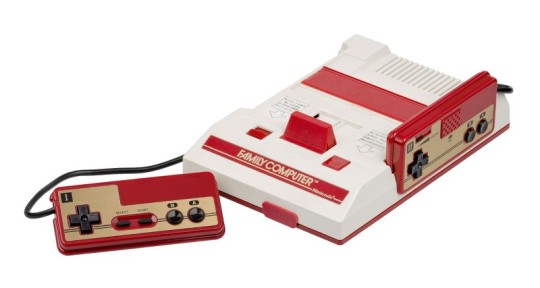
Introduction
As 1983 came into focus, the future of video games in North America looked bleak. Store shelves were crowded with poorly made games, and consumer interest waned substantially. Developers that ushered in the “golden age” of arcades and the first two generations of home consoles began to crash and burn at an alarming pace. In no time, the once billion-dollar industry was reduced to rubble.
In the summer of that same year, in Japan, gaming giant Nintendo released its first-ever home console with swappable cartridges. With its striking red and gold design, the Family Computer, better known as the Famicom, brought arcade hits like Donkey Kong and Mario Bros. into Japanese homes.
While the Famicom would go on to revitalize the North American gaming market as the VHS-inspired Nintendo Entertainment System, or NES, many of Nintendo’s quirky games and accessories were forever locked in its home country. With the Famicom’s 40th anniversary at hand, there’s never been a better time to look back on the bizarre and surprisingly innovative experiments Nintendo unleashed on Japanese players throughout the console’s celebrated run.

Famicommunication
Famicommunication
Unlike the NES, the Famicom came with its two blocky controllers wired directly to the console. While one might think this tethered design was to keep players from losing controllers, it was actually a simple cost-cutting measure – one Nintendo would soon regret as more and more players sought out replacements. Aptly anticipating a future filled with wacky accessories, Nintendo also included a 15-pin connector on the front of the Famicom, ready for anything the future might hold.
The most surprising addition to the Famicom’s original design was on the console’s second controller – a minuscule microphone, complete with a volume slider. The microphone’s inclusion was spearheaded by Nintendo Research and Development lead architect Masayuki Uemura, who felt younger players would enjoy hearing their own voices crackling out of TV speakers. Though his prediction wasn’t exactly wrong, the Famicom microphone was notoriously underutilized by developers, mostly lending itself to a handful of iconic Easter eggs in single-player games.
While a few early titles did make use of the microphone, most Japanese players wouldn’t be hollering into their second controller until 1986’s The Legend of Zelda. The 8-bit masterpiece featured a slew of unique enemies for protagonist Link to defeat on his quest, but few so wily as Pols Voice. Depicted as blobby rodents with enormous ears, the instruction manual explained that the monsters “hate loud noises.” With a deafening roar into the Famicom’s microphone, which could only be found on the second player controller, all Pols Voice on screen would be thoroughly eradicated. This was a far superior method to attacking with normal weapons, as the enemies’ nimble movements and high health made them especially annoying.
Strangely, the description of the Pols Voice hatred of loud noises was included in the manual for the English release, despite the fact developers had retooled the dungeon-dwelling baddies to now be weak to arrows. Zelda fans outside Japan wouldn’t feel the thrill of shouting an enemy to death until 2007’s Phantom Hourglass for the Nintendo DS, which allowed players to once again obliterate Pols Voice with a well-placed shriek.
Other notable examples of the Famicom microphone include Kid Icarus and the infamously difficult Takeshi’s Challenge. The former allowed players to verbally haggle down the price of items with shopkeepers by yammering on about whatever they liked, while the latter, starring comedian, actor, and director “Beat” Takeshi Kitano (Battle Royale, Violent Cop), had players using the microphone for a variety of tasks, such as bringing up a map and singing karaoke.
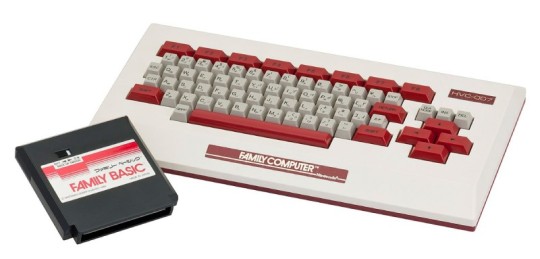
Famicomputing
Famicomputing
When Uemura and his team were first tasked with designing the Famicom, they envisioned a gaming device with a 16-bit CPU, a keyboard, a modem, and a floppy disk drive. With costs considered, none of these superfluous features made it far into the planning stage, each launching as their own separate accessory in the years to come. The first to resurface, released in the summer of 1984, was the boxy Family BASIC Keyboard bundle, a collaboration between Nintendo, Sharp Corporation, and Hudson Soft.
Included with a taller-than-average black cartridge and a hefty user manual, the Family BASIC Keyboard and its accompanying software were intended for the blossoming home computer crowd. At the time, BASIC (short for Beginners’ All-purpose Symbolic Instruction Code) was seen as the ideal programming language for novice developers and casual players alike. Family BASIC tried to make things even easier by including extra support for character sprites (including preset Mario and Donkey Kong models), backgrounds, controls, and music. Famed Mario composer Koji Kondo even got in on the action, penning a section in the user manual on how best to program chiptune melodies.
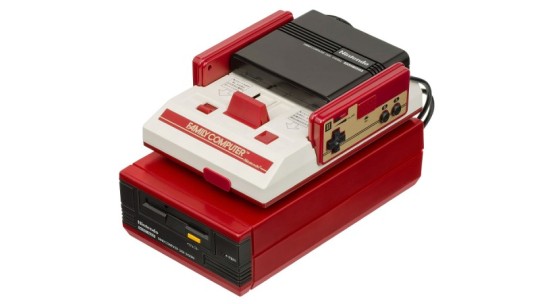
Though the bundle cost a hefty ¥14,800 at launch (the same price as the Famicom itself), the kit didn’t come with a way for players to save their creations or share them with others. For this top-of-the-line feature, Nintendo suggested purchasing the Famicom Data Recorder, a device that saved one’s game directly to a standard cassette tape – for an additional ¥9,800. Ironically, sharing games and rampant piracy of Famicom titles had become a huge issue for Nintendo by this time. The problem got so out of hand that various media associations across Japan lobbied to update the Japanese Copyright Act, essentially banning all video game rentals countrywide. The ban, which does give individual developers the ability to allow rentals of their games (though they rarely do), still exists to this day. Despite its price point, the Family BASIC bundle sold well enough to warrant an updated sequel – Family Basic V3.
Nintendo even toyed with the idea of a keyboard for the NES, to be included in a never-released collection called the Nintendo Advanced Video System. Shown off at the 1984 Consumer Electronics Show, the NES keyboard was featured alongside prototype controllers, a joystick, a cassette recorder, and a zapper that looked more like a robotic wand than a gun. Amazingly, every accessory in the Advanced Video System was wireless, connecting via infrared technology.
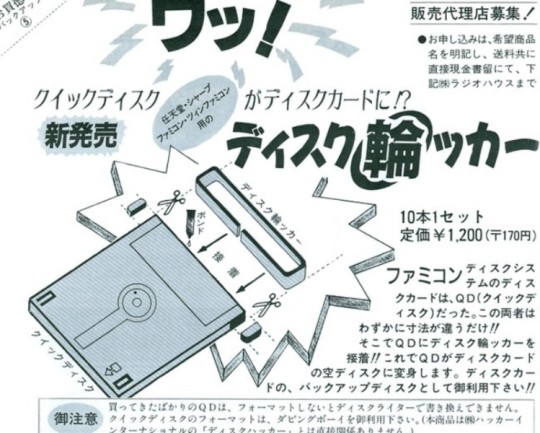
Famicompatible
Famicompatible
With the rental ban in full effect and piracy levels dipping, Japan’s general gaming public was feeling the sting of video game pricing. Nintendo, hearing the grumbles of its audience, researched ways of producing a cheaper option than its colorful cartridges. Enter the Famicom Disk System – a floppy disk add-on that both plugged into the top of the Famicom and sat below it. Though introducing an expensive new accessory (one that cost more than the console itself) to promote cheaper games might seem counterintuitive, Nintendo did just that in 1986.
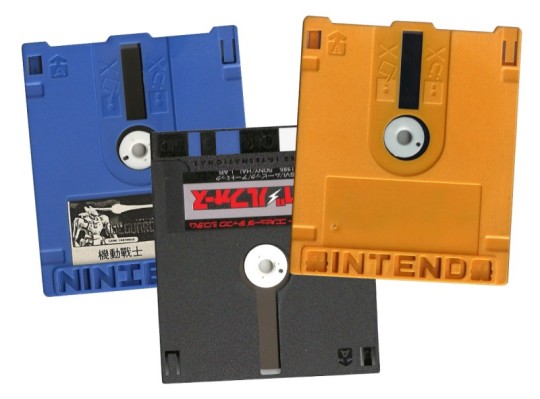
Similar to floppy disks of the time, the games for Famicom Disk System were housed in a hard plastic shell and dubbed “Disk Cards.” Commonly produced in a brilliant yellow casing, the double-sided Disk Cards were impressed with a large NINTENDO logo at the bottom. This impression allowed Nintendo a form of physical lockout it hoped would help quell piracy. This wasn’t the case, as many clever bootleggers produced their own case molds with the proper inlays, often springing for misspellings like NINFENDO and NINIENDO to trick the Disk Drive. Regardless of their manufacturer, Disk Cards were considered too fragile by most players and poorly designed, with many prone to errors due to dust buildup.
Though games for the Disk System were cheaper, the true appeal was the ability to download new titles to endlessly-reusable Disk Cards via one of the 10,000 Famicom Disk Writer kiosks found at toy, game, and hobby shops across Japan. The process cost a paltry ¥500 (¥100 extra for an instruction sheet), or roughly a sixth the price of purchasing a new cartridge-based title. Not only could players download new games, but they could use each store’s dedicated “Disk Fax” machine to submit high scores directly to Nintendo for various tournaments. With player data in hand, Nintendo awarded tournament prizes ranging from Famicom branded stationary to gold Punch-Out!! cartridges, predating Mike Tyson’s $50,000 deal to lend his likeness to the series.

Nintendo’s hardware team was hard at work developing a different kind of add-on, one that would only work with the Disk System – 1987’s Famicom 3D System. Unlike the well-known glasses-free 3D of the 3DS, the 3D System used shutter glasses and alternate frame sequencing to create an illusion of depth. While the effect worked, the system was a substantial failure, with only six games ever produced. The most notable was Famicom Grand Prix II: 3D Hot Rally, considered by many to be the first Mario racing game and precursor to the Mario Kart series.
With Nintendo pushing all its newest first-party games to the Disk System to boost sales, the peripheral soon became the only way to play era-defining hits such as The Legend of Zelda, Castlevania, and Metroid, as well as Japan-only cult favorites like The Mysterious Murasame Castle and the Famicom Detective series. Despite their longer load times and flimsy housing, many consider Disk Card games a step above their cartridge counterparts, as the Disk System allowed for save features and a much richer audio experience. Though Nintendo would eventually return to cartridges with the Super Famicom, the Disk System was still a respectable success, with 4.4 million units sold in its four years on the market.

Famicommerce
Famicommerce
In North America, many think of the Sega Dreamcast as the first home console with online connectivity. But in Japan, every single Nintendo home console, from Famicom to Switch, had some form of internet compatibility. It all started in 1988 with the release of the infamous Famicom Modem, another clunky add-on, brimming with potential, that struggled to find a long-term audience.
The idea for the Famicom Modem came not from a desire to let players connect and play games together, but rather from something more dull – the stock market. As Famicom flourished, financial service company Nomura Securities approached Nintendo about using the system for people to check on stock prices in real-time and possibly even buy, sell, and trade stocks at home. Working closely with Nomura Securities, Uemura and his team developed a modem that worked with an online service dubbed the Famicom Network. Like the Famicom Disk System before, the Famicom Modem was plugged into the top of the console, allowing players to insert credit-card-sized cartridges for different types of transmissions. Lacking a dedicated keyboard, a special controller with a full number pad was included to help users navigate the number-centric software.
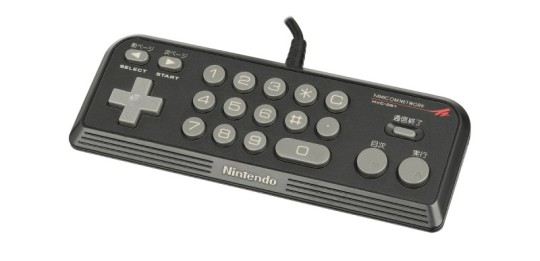
In July 1988, a test run of 1,500 prototypes produced outstanding results. With the Japanese stock bubble growing larger by the day, more and more investors were obsessed with checking market prices and making trades on the fly, an ideal situation for Nintendo. Unfortunately, this success soon evaporated when the Famicom Modem hit store shelves two months later. Nintendo was shocked to find its circuit system was unstable, leading to widespread circuit failure, and many users were less than thrilled with the modem’s cord-heavy set-up. Coupled with the inevitable burst of Japan’s stock market bubble in 1989, most were left uninterested in the add-on’s specific services – even those who owned it.
While the Famicom Modem flailed, Uemura and his team still tested the system’s gaming capabilities. Five prototype games were developed, the most prominent based on the ancient board game Go, but all were deemed failures in the end. “We were unable to realize our dream of using the modem to augment Famicom games,” Uemura told Nikkei Electronics magazine (via Glitterberri blog) in 1995. “The game would require players to be connected to the phone line for an extended period of time. If the problem of data transmission fees wasn’t enough, we were also faced with the risk of users monopolizing the phone line.”

The modem’s saving grace, outside of providing horse racing bets and results to diehard fans, was its ability to let toy and game stores share an online database. By inserting the Super Mario Club cartridge, stores could post reviews and communicate sales to one another, sharing what games were top sellers. Nintendo could also peek at this database, allowing the company to better understand the market consumer demand.
As with most of its promising technology, Nintendo toyed with releasing the Famicom Modem in the United States with a slight twist. If Japanese users could place bets on horses through the Famicom, Minneapolis-based company Control Data Corporation was confident American users could use an NES Modem to play the lottery. In 1991, with Nintendo on board, Control Data announced its plans to test a subscription model, wherein users could pay $10 a month to play all Minnesota-based lottery games via their NES. Unsurprisingly, it wasn’t long until the concept of adding unsupervised gambling to a home console aimed at children raised a few eyebrows in parent groups and the political sector – squashing dreams of an NES Modem before its initial tests ever began.
It’s easy to look back on the Famicom and focus solely on its iconic games, but looking deeper into the hardware and accessories that give it personality helps bring its influence and legacy into perspective. Like today, the Nintendo of the 1980s was willing to aim its resources towards innovative and silly concepts, striving to find the next niche in the gaming market. It stumbled from time to time, but there’s no doubt that even its failures brought a sense of wonder and joy to thousands of players along the way.
This article originally appeared in Issue 358 of Game Informer
#000#1980s#3d#add-on#America#anniversary#Article#audio#billion#Blog#board#bundle#challenge#Children#code#Collaboration#computer#connectivity#connector#consumer electronics#copyright#cpu#crash#cutting#data#Database#deal#Design#developers#development
1 note
·
View note
Link
NES ve SNES yaratıcısı Masayuki Uemura 78 yaşında öldü Uemura, Nintendo'da 30 yıldan fazla çal...
0 notes
Text




Libby Spotlight: Gaming eMagazines
The Story of Pokemon
Welcome to the world of Pokémon! For over 25 years, this series has entertained leagues of aspiring Trainers. Inside this special celebratory bookazine, we’re going to take you on a journey from the very first generation of Pokémon, all the way to the eighth. On our quest, we’ll learn about how each era brought something new to the series, explore each and every Pokédex expansion and delve deep into the stories behind the videogames, television series and more. Whether you’re a Pokémon Professor or an aspiring Pokémon Master taking their first steps towards the Indigo Plateau, we’re confident that you’ll enjoy the ride. Your very own Pokémon legend is about to unfold. A world of dreams and adventures with Pokémon awaits. Let’s go!
The Ultimate Guide to Roblox
This ultimate guide will include inside tips and tricks for any level of Roblox payer, in addition to a guide no player should be without! There is so much to explore, it’s daunting to find the best experiences. That’s where this updated issue comes in! We break down the most popular games available and give tons of details to help you decide which to play. Inside you’ll learn about Welcome to Bloxburg, Work at a Pizza Place, Adopt Me, Jail Break, Piggy, Royale High, Meep City, and Nuke Town. We also look at 15 games gaining popularity right now. For players new to Roblox, we have a guide explaining the platform, and more advanced users will find tips on how to make money inside the gaming world. This is the ultimate guide to discovering everything you need to know about the gaming sensation.
Nintendo Archives
Nintendo is one of the most exciting publishers in gaming today, with a legacy that stretches back 127 years. Nowadays it’s best known for consoles such as the NES, N64 and GameCube, and classic franchises that include Mario, Zelda, Donkey Kong and Metroid. This fantastic book looks at every one of its main systems, as well as its greatest games. No Nintendo fan should be without it.
Featuring:
Inside the NES - Masayuki Uemura reveals how he helped create Nintendo’s 8-bit masterpiece
30 Greatest Super Mario Moments - The amazing moments that defined Mario. How many do you remember?
Playing With Power - Everything you need to know about Nintendo’s 16-bit super console
Nintendo’s greatest games - The hits that defined the NES, Game Boy, SNES, N64 and Game Boy Advance
The Ultimate Guide to Fortnite
A new Season of Fortnite is always a cause for excitement, but Chapter 4, Season 2 is on a whole new level. The southern end of the Island has been completely transformed, with a brand-new Biome inspired by incredible real-life locations in Japan. Wander the dark streets of MEGA City, a futuristic cyberpunk metropolis, or admire the traditional architecture and stunning scenery in the surrounding regions—this is Fortnite like we’ve never seen it before! There are also some new game mechanics coming to spice up the fight, like Rail Grinding: You can explore the Island at lightning speed while keeping your hands free for combat. Take to the skies, ride the rails and get a bird’s-eye view of the landscape . The new Battle Pass is as exciting as ever, jam-packed with amazing items for you to collect. Along with seven new characters, alternate styles, accessories and more, there are extra quests to complete for bonus gifts—just start playing and rake in the rewards!
#gaming#digital magazine#libby#library resources#reading recommendations#reading recs#book recommendations#book recs#tbr#tbrpile#to read#booklr#book tumblr#book blog#library blog
0 notes
Text
Nintendo Console Creator Masayuki Uemura Dies at 78
Nintendo Console Creator Masayuki Uemura Dies at 78
Masayuki Uemura, the lead architect for the Nintendo Entertainment System (NES) and the Super NES, has died, local media reported.
He was 78, a Japanese newspaper Nikkei Asia reported. Uemura, a native of Tokyo, was a visiting professor at Ritsumeikan University in Japan.
In 197Os, Uemura was in charge of developing the NES and its successor, the SNES. These consoles became huge hits with…

View On WordPress
0 notes
Text
Super mario 64 emulator with gamepad

#Super mario 64 emulator with gamepad Pc#
Nintendo's initial shipment of 300,000 units sold out within hours, and the resulting social disturbance led the Japanese government to ask video game manufacturers to schedule future console releases on weekends. The North American logo has a striped background outlining four oval shapes.ĭesigned by Masayuki Uemura, the designer of the original Famicom, the Super Famicom was released in Japan on Wednesday, November 21, 1990, for ¥25,000 (equivalent to ¥27,804 in 2019). The four-color Super Famicom mark is part of the logo in the Japanese and PAL regions, with colors corresponding to those of the control pad buttons. The console was demonstrated to the Japanese press on November 21, 1988, and again on July 28, 1989. The magazine and Enix both expressed a strong interest in networking as a standard platform feature.
#Super mario 64 emulator with gamepad Pc#
Famicom Hissyoubon magazine speculated that Nintendo's early announcement was probably made to forestall Christmas shopping for the PC Engine, and relayed Enix's clarification that it was waiting on sales figures to select either PC Engine or Super Famicom for its next Dragon Quest game. 4, Dragon Quest V, three original games, and he projected sales of 3 million units of the upcoming console. On August 30, 1988, in an interview with TOUCH Magazine, he announced the development of Super Mario Bros. On September 9, 1987, then-Nintendo president Hiroshi Yamauchi revealed the development of the Super Famicom in the newspaper Kyoto Shimbun. Nintendo executives were in no rush to design a new system, but they reconsidered when they began to see their dominance in the market slipping. However, it took several years for Sega's system to become successful. Both systems were built on 16-bit architectures and offered improved graphics and sound over the 8-bit NES. The two platforms were later launched in North America in 1989 as the TurboGrafx-16 and the Sega Genesis respectively. To compete with the popular Family Computer in Japan, NEC Home Electronics launched the PC Engine in 1987, and Sega followed suit with the Mega Drive in 1988. It continues to be popular among collectors and retro gamers, with new homebrew games and Nintendo's emulated rereleases, such as on the Virtual Console, the Super NES Classic Edition, Nintendo Switch Online as well as several non-console emulators which operate on a desktop computer, such as Snes9x.Įarly concept designs for the Super NES are called the "Nintendo Entertainment System 2". Overlapping the NES's 61.9 million unit sales, the Super NES remained popular well into the 32-bit era, with 49.1 million units sold worldwide by the time it was discontinued in 2003. The Super NES received largely positive reviews and was a global success, becoming the best-selling console of the 16-bit era after launching relatively late and facing intense competition from Sega's Genesis console in North America and Europe. It was designed to accommodate the ongoing development of a variety of enhancement chips integrated into game cartridges to be competitive into the next generation. The console introduced advanced graphics and sound capabilities compared with other systems at the time. The Super NES is Nintendo's second programmable home console, following the Nintendo Entertainment System (NES). Although each version is essentially the same, several forms of regional lockout prevent cartridges for one version from being used in other versions. The system was released in Brazil on August 30, 1993, by Playtronic. In South Korea, it is called the Super Comboy and was distributed by Hyundai Electronics. In Japan, it is called the Super Famicom ( SFC). The Super Nintendo Entertainment System ( SNES), commonly shortened to Super NES or Super Nintendo, is a 16-bit home video game console developed by Nintendo that was released in 1990 in Japan and South Korea, 1991 in North America, 1992 in Europe and Oceania, and 1993 in South America. Stand-alone: Street Fighter II: The World Warrior, 6.3 million.Pack-in: Super Mario World, 20.60 million.

0 notes
Text
Super contra game download for android

#SUPER CONTRA GAME DOWNLOAD FOR ANDROID HOW TO#
#SUPER CONTRA GAME DOWNLOAD FOR ANDROID PC#
Follow this simple guide and get any of the favorite app – including Super Contra Classic Game on PC. This app is developed by hkouch apps and available on google play store. Super Contra Classic Game, one of the best Adventure category app, is now available for PC.
#SUPER CONTRA GAME DOWNLOAD FOR ANDROID HOW TO#
Here in this detailed step by step guide, we’ll let you know how to download and play Super Contra Classic Game on your PC.
#SUPER CONTRA GAME DOWNLOAD FOR ANDROID PC#
Be free to download all of them and enjoy as much as possible.Have you ever wondered whether you can play Super Contra Classic Game game on your Windows PC? Yes, even if the official version of the Super Contra Classic Game for PC platform not released, you can still enjoy this game on your laptop. All of these games are tested and transferred into ROMs before uploading to the page you are looking at. The most popular games for the console are Super Mario World, Donkey Kong Country, Street Fighter II, and Super Mario Kart. Online services offered to gamers were Nintendo Power (for Japan only), Satellaview (also only available in Japan) and XBAND used in the United States and Canada. The specifications include Ricoh 5A22 CPU operating at 3.58 MHz and Nintendo S-SMP sound card. The console was well-made as well as powerful enough to push all the games up to the limits. Some of those developers were Koei, Konami, Enix, Capcom, Tecmo and many others. Probably the main reason why the console was popular and still is among gamers is the fact Nintendo used third-party developers that were present with previous consoles. The Japanese government demanded from Nintendo to schedule all future releases and promotions for weekends only, in order to decrease rush in the country! Also, the console was shipped from Japan to other countries at night only, so robbery risk was decreased. The 300.000 units were sold out within several hours in Japan. It was designed by Masayuki Uemura and it became extremely popular console hours after release. There are a lot of additional facts regarding the console. These days, Super Nintendo Entertainment System consoles are popular and desirable among collectors and can buy at high prices. However, this was for a short period of time. An interesting fact is that SNES remained popular for some time even when 32-bit consoles were introduced. NES was sold in 61 million copies, while SNES was sold in almost 50 million. Overall, Super Nintendo was a huge hit across the planet and it sold out common rivals such as Sega Genesis. In addition, SNES is known as a system that is responsible for countless, future improvements in the world of gaming. In the realm of 16-bit games, Super Nintendo Entertainment System was the ultimate platform. Graphics became so much better, sound capabilities were significantly improved and the games were more advanced. Super Nintendo Entertainment System replaced NES or Nintendo Entertainment System. There were regional locks implemented to a console which limited the compatibility of games according to the region where the console was sold. In Korea it was known as Super Comboy and Hyundai Electronics was responsible for distribution. For instance, in Japan, it was known as SFC or Super Famicom. The following year, 1993 SNES was released in South America.Īlthough the same console was sold, different names were used. Europe and Australia got the console in 1992. Actually, the console was released in 1990 in South Korea and Japan but was released in the United States in 1991. In a nutshell, this is a 16-bit console developed and released by Nintendo in 1990. Other, common terms used to explain the console are Super NES and Super Nintendo. SNES or Super Nintendo Entertainment System is one gaming console that comes under many names. Super Nintendo Entertainment System Information

0 notes
Photo
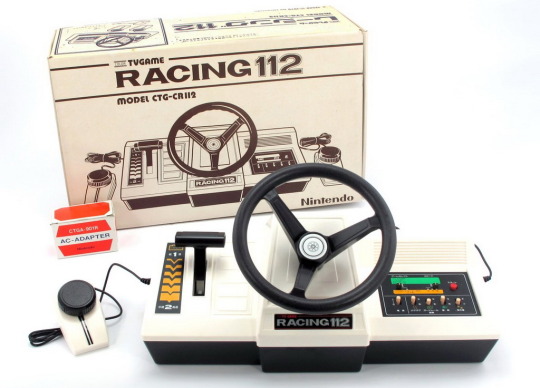
Nintendo Color TV Racing 112, 1978.
187 notes
·
View notes
Photo

Kamimura Hinano (Uemura Hinano)
29 notes
·
View notes
Video
youtube
Space Fever/スペースフィーバー for Arcade made in 1979 by Nintendo, Ikegami Tsushinki, Masayuki Uemura, and Shigeru Miyamoto
1 note
·
View note
Photo

Masayuki Uemura NYU lecture poster by Steve Courtney
I was asked by the fine folks at NYU's Game Center to design a poster promoting a lecture by the designer of the Nintendo Entertainment System, Masayuki Uemura.
#Nintendo#NES#Masayuki Uemura#Donkey Kong#console#cartridge#controller#poster art#graphic design#3D render#digital art#video games#retro gaming#Steve Courtney
30 notes
·
View notes
Text

11 notes
·
View notes
